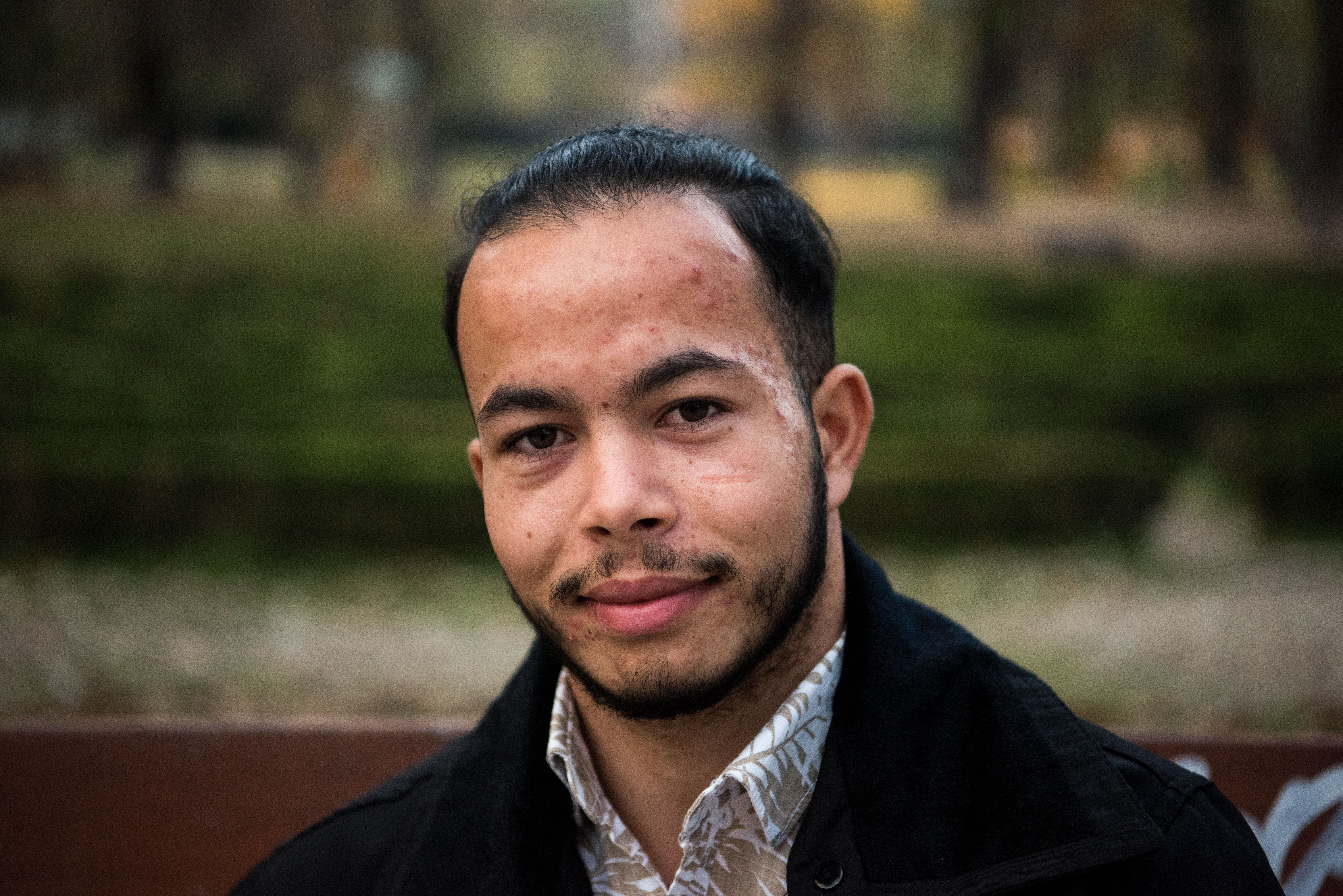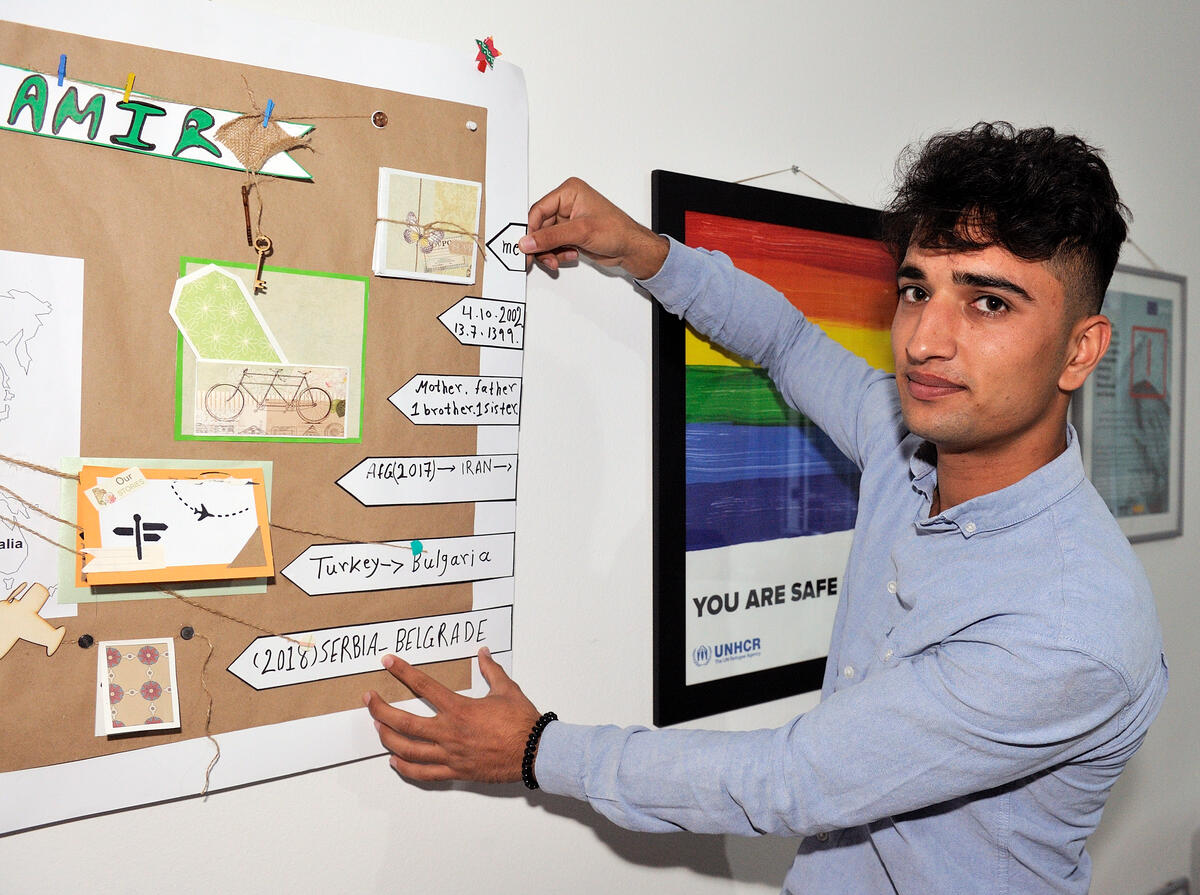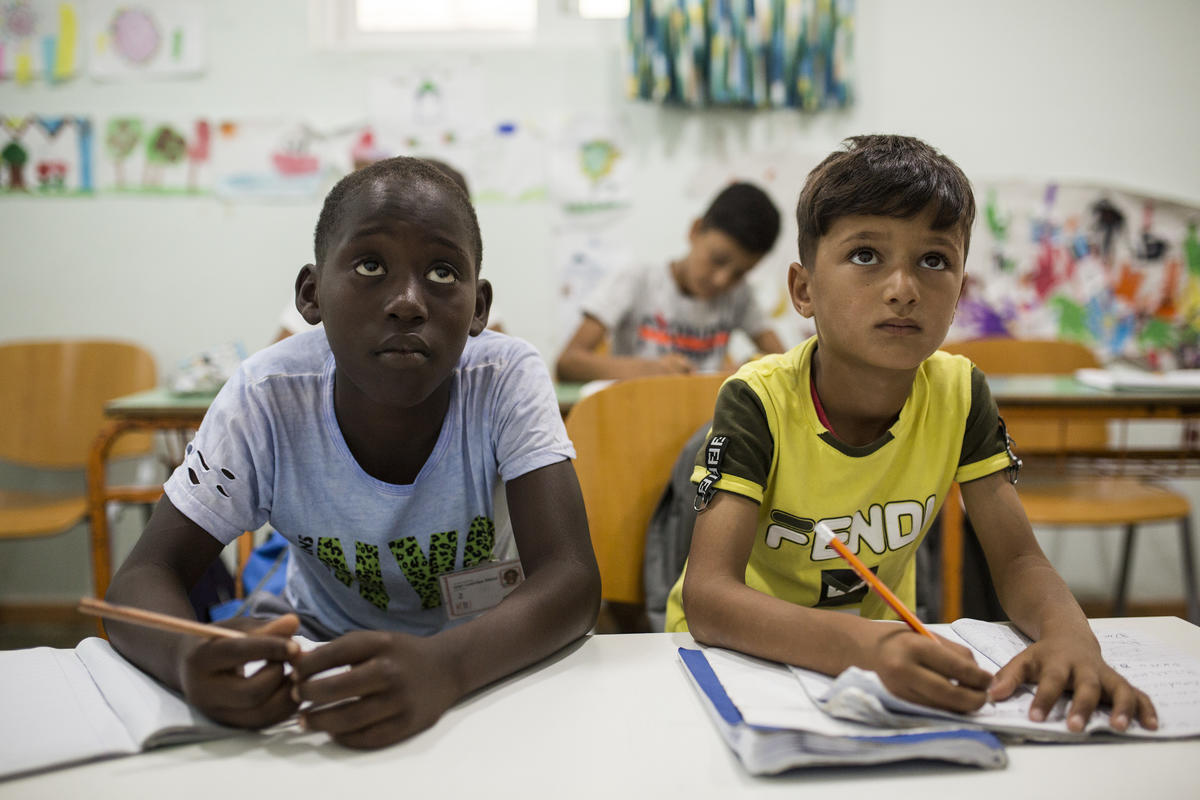Kosovo Crisis Update
Kosovo Crisis Update
Kosovo
Assessment teams continue to fan out in the rural areas and aid agencies continue to arrive to help in the massive relief programme now underway in Kosovo. Land mines and unexploded ordnance continue to pose huge risks throughout the province.
At least 34 relief organizations have arrived in Kosovo since UNHCR returned to Pristina on Sunday June 14 to coordinate relief operations. So far, UNHCR has established a presence in Prizren and Pec while mobile teams continue to roam the countryside daily, conducting aerial and overland assessments.
UNHCR made an assessment mission to Gnjilane Friday, via Urosevac. The team, which came from UNHCR's Skopje office, said that Urosevac seemed livelier with more activities than had previously been reported. They saw cattle being herded, laundry drying on balconies and more people than UNHCR had seen on Wednesday. But villages along the main road between Urosevac and Gnjilane still looked deserted. There was a stark contrast between Albanian and Serbian villages. People cheered as the team went through Albanian areas. But villagers were looking down or away as the team went through Serb villages. Not much destruction was seen in Gnjilane, but people there said that the surrounding areas were mined.
The supply pipeline from Skopje to Pristina continued on Saturday morning, with a multi-agency convoy consisting of 17 trucks heading for Kosovo. In addition to WFP's food stocks, UNHCR has non-food items for 54,000 people stockpiled in Skopje, with more arriving there daily.
Albania
More than 14,500 Kosovars returned on Friday to Kosovo from the northern Albanian town of Kukes. So far this week, around 50,000 refugees have gone back from Kukes to Kosovo. The returnees from the Cap Anamur and UNHCR/MSF camps took their tents and all other relief items with them.
UNHCR and its partner NGOs are distributing assistance to returnees, upon departure from Albania, including food rations, plastic sheeting, jerry cans and blankets and baby kits. At way stations on the road to Prizren, food and water are made available.
The German contingent of KFOR, the international security force in Kosovo, has put order in the flow of traffic on the narrow road between Kukes and Prizren.
About half of the returning Kosovars were heading for Prizren, where the situation was reported to be relatively stable on Friday, except for explosions on the outskirts of the town. The blasts appeared to have been caused by cattle stepping on land mines.
Four out of nine refugee camps in the Kukes area have already been closed down. Remaining refugees are being regrouped in three camps.
UNHCR and the Albanian authorities continue to advise refugees to cross only at the Morini border point, because of the acute danger of land mines at other crossings. Four persons were injured on Friday when they tried to cross at Qist-e-Feci, south of Morini. Notwithstanding these warnings, considerable numbers of persons are reported to have crossed on Friday at Qaf-e-Prushit, heading for Djakova (Djakovica). This area is heavily mined and very risky.
On Friday, the Emergency Management Group, the co-ordination body including the Government of Albania, UNHCR, NATO and NGOs, presented its plan for the organized repatriation of Kosovar refugees from Albania. The plan foresees that the Emergency Management Group will co-ordinate logistical arrangements, and estimates that well over 50% of the refugees in Albania will need to be transported first by train and bus to northern Albania, before moving back into Kosovo. An information campaign will be carried out to enable the refugees to make an informed decision about the timing of their return home. The Group expressed the hope that security conditions and the absorptive capacity in Kosovo would allow organized returns to begin in early July.
FYR of Macedonia
The return of refugees from the FYR of Macedonia seems to be gathering momentum. Around 8,500 refugees went back home on Friday - 4,200 passing through the main immigration control at Blace, 4,100 at Jazince and 200 at Tabanovce.
Since Tuesday, around 23,500 refugees have departed from the FYR of Macedonia to Kosovo. As in the previous days the pattern Friday appeared to be that the better off Kosovars were heading home, driving their cars and tractor-trailers.
There were long lines of vehicles at Jazince on Friday. At noon, the queue was 50 vehicles, including some 10 buses. Some 1,600 returnees were from camps. Buses - some government organized and others privately hired - were shuttling refugees from Stenkovec One camp to Blace.
A refugee who had travelled to Pristina to check on his apartment came back yesterday to pick up his family and told UNHCR staff that he had found his apartment in the provincial capital had been occupied in his absence by a Serb policeman. By the time he got there the Serbian occupant had fled, but he said that the place was so beautifully furnished he almost didn't recognize it.
A survey conducted by the International Organization for Migration on Friday at Stenkovec 1 and 2 and at Cegrane camps showed that just 59 percent of the refugees acknowledged the dangers of land mines and unexploded ordnance in Kosovo. This figure reveals that mine awareness efforts need to be redoubled. 45% of the refugees surveyed said they wanted to go home immediately. The others stated they wanted to wait until security was assured.
Republic of Montenegro
A UNHCR team has found that the presence of Yugoslav military checkpoints along the road in Montenegro leading to the border and the northern Kosovo town of Kosovska Mitrovica is preventing IDPs from returning to Kosovo.
Montenegrin police also report that members of the Kosovo Liberation Army at the Kula border on the Kosovo side are harassing Serb civilians leaving Kosovo. Police sources told UNHCR that on Thursday, a 16-year-old Serb boy was killed at Kula when a group of Serb civilians in 20 cars attempted to go back to Kosovo. In a separate report, UNHCR was told that another Serb male was wounded in an exchange of gunfire with the KLA at Radusa, as Serbs were leaving Kosovo for Montenegro.
Federal Republic of Yugoslavia
In response to a request from Yugoslav authorities, UNHCR is dispatching on Saturday a relief convoy to displaced Serbs who have arrived in central Serbia from Kosovo. The convoy will bring mattresses, sleeping bags, tents, blankets, food packs, jerry cans, soap and kitchen sets. Around 50,000 displaced Serbs from Kosovo are believed to be in the region of central Serbia, according to preliminary reports from the government and the Yugoslav Red Cross.
UNHCR-IOM Humanitarian Evacuation Programme
Just 258 refugees left the FYR of Macedonia under the humanitarian evacuation programme on 18 June. This brought to 88,108 the overall count of departures under the programme.
On Friday, an informal consultative meeting was called by UNHCR and IOM to discuss the future of the programme. An announcement is expected to be made next week, following further discussions with the 40 countries involved.








